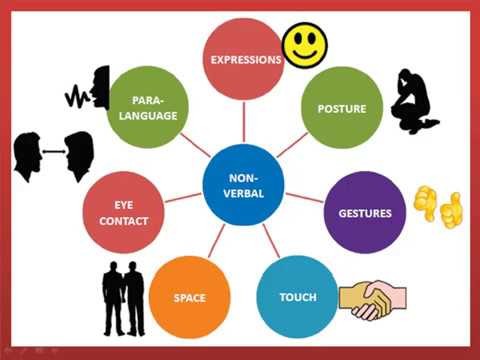🗣️ The Silent Language: Unlocking the Power of Non Verbal Communication as a Soft Skill
Unlock the true power of communication beyond words. This blog explores how non verbal cues like facial expressions, posture, and tone shape your personal and professional success. Mastering this silent language is the key to impactful soft skills.
Shital Bora Padgelwar
6/22/20252 min read


Facial Expressions
The face is incredibly expressive. A smile, frown, raised eyebrow, or a puzzled look can convey emotions more powerfully than words. Mastering facial expressions is a valuable soft skill in building empathy and trust.
Gestures
From waving and pointing to using hands while talking, gestures emphasize and sometimes replace verbal messages. Appropriate gestures enhance the impact of your message and reflect strong interpersonal soft skills.Posture and Body Movement
How we sit, stand, or walk communicates confidence, openness, nervousness, or discomfort. Good posture is a non-verbal soft skill that reflects confidence and professionalism.
Eye Contact
Maintaining eye contact shows attentiveness, sincerity, and confidence, while avoiding it may imply discomfort or dishonesty. It’s a subtle yet essential soft skill that can build rapport and engagement.
Paralinguistics
This includes vocal elements like tone, pitch, loudness, and speech rate. The same sentence can express different emotions depending on how it’s said. Being aware of your tone is a critical communication soft skill.Proxemics (Personal Space)
The distance we maintain in conversations communicates intimacy, formality, or dominance. Understanding cultural and contextual differences in proxemics is a refined soft skill.
Appearance
Our clothing, grooming, and overall presentation impact how others perceive us before we even speak. A professional appearance is a non-verbal soft skill that enhances credibility.Silence
The Silence can be a powerful communicator—expressing thoughtfulness, discomfort, disagreement, or respect depending on context. Using silence effectively is a mature soft skill often overlooked.
Why Is Non-Verbal Communication a Critical Soft Skill?
✔️ Builds Trust and Credibility: When non-verbal cues align with verbal messages, communication feels more authentic—strengthening this crucial soft skill.
✔️ Enhances Clarity: Gestures and expressions can reinforce and clarify spoken words, making your communication more effective.
✔️ Regulates Interaction: Non-verbal signals help manage the flow of conversation—indicating when to speak, pause, or end—a key collaborative soft skill.
✔️ Expresses Emotions: Often, emotions are best expressed without words—an essential aspect of emotional intelligence, another soft skill.
✔️ Crosses Language Barriers: Non-verbal cues are often universally understood, making them powerful in multicultural settings and vital in global soft skill development.
💡 Tips to Improve Your Non-Verbal Communication Soft Skills
✔️ Be aware of your body language – Practice open and confident posture.
✔️ Make appropriate eye contact – Not too much to seem aggressive, not too little to seem evasive.
✔️Control facial expressions – Be mindful of what your face is “saying.”
✔️Mirror appropriately – Subtly mirroring the body language of others can build rapport.
✔️ Practice active listening – Nodding, leaning forward slightly, and reacting naturally show engagement—hallmarks of strong soft skills.
Conclusion
Non-verbal communication isn’t just an accessory to our spoken words—it’s a soft skill and a language of its own. Whether you're giving a presentation, teaching a class, attending a job interview, or simply having a conversation, being mindful of your non-verbal cues can dramatically improve how you connect with others. In mastering this silent language, you don’t just communicate better—you connect deeper, showcasing the essence of impactful soft skills.
In a world where words dominate conversations, the unspoken language non-verbal communication—quietly shapes our interactions, perceptions, and relationships. Whether we realize it or not, our gestures, facial expressions, posture, and even silence speak volumes. Studies suggest that over 70% of communication is non-verbal, making it one of the most powerful soft skills in personal and professional life.
What Is Non-Verbal Communication?
Non-verbal communication refers to the transmission of messages without spoken words. It includes body language, facial expressions, eye contact, gestures, tone of voice, posture, appearance, and even the physical distance between communicators. As a key soft skill, it plays a critical role in how effectively we connect, collaborate, and lead.
Types of Non-Verbal Communication
© 2025 AIMs - An Identity of Myself. All Rights Reserved.
Website Designed by Aditya Rajbhar
+91 72194 07665
